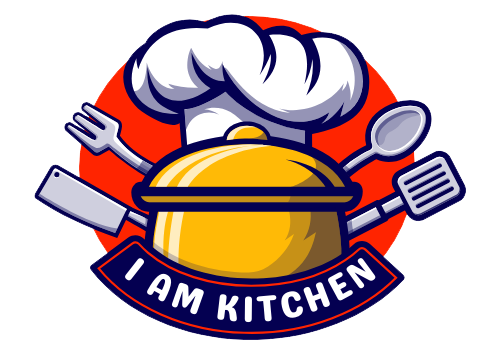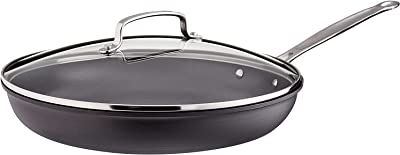Nonstick skillets have become a popular kitchen item over the years. They are versatile tools in the kitchen, allowing you to cook a wide variety of dishes with ease. In this article, we will explore what nonstick skillets are, how they work, their benefits, and Why Use a Nonstick Skillet? .
What is a Nonstick Skillet?
A nonstick skillet is a frying pan with a special coating that prevents food from sticking to its surface. The coating is typically made of polytetrafluoroethylene (PTFE), which is a type of plastic that is resistant to heat and chemicals. The nonstick coating creates a smooth surface that makes it easy to cook delicate foods such as fish or eggs without the need for additional oils or fats.
How Does a Nonstick Skillet Work?
The nonstick coating on a skillet works by creating a smooth surface that prevents food from sticking. The PTFE coating is bonded to the surface of the pan through a process called sintering. During this process, the PTFE is heated and fused to the surface of the skillet, creating a durable and non-stick surface.
When to Use a Nonstick Skillet?
Nonstick skillets are ideal for cooking foods that are delicate or that tend to stick to the surface of traditional skillets. Some examples of dishes that can be cooked in a nonstick skillet include:
- Eggs: Nonstick skillets are perfect for cooking eggs, as they prevent them from sticking to the surface of the pan. Whether you prefer scrambled, fried, or omelets, a nonstick skillet is the way to go.
- Fish: Fish can be delicate and tends to stick to the surface of traditional skillets. A nonstick skillet provides a smooth surface for cooking fish without the need for additional oils or fats.
- Pancakes: Pancakes are another food that benefits from the smooth surface of a nonstick skillet. The nonstick surface prevents the batter from sticking and allows for easy flipping.
- Vegetables: Nonstick skillets are also ideal for cooking vegetables that tend to stick, such as onions or mushrooms. The smooth surface allows them to cook evenly without sticking to the surface of the pan.
What are the Benefits of a Nonstick Skillet?
There are many benefits to using a nonstick skillet, including:
- Easy to Clean: Nonstick skillets are easy to clean, as food does not stick to the surface. Simply rinse the skillet with warm water and soap, and it will be clean in no time.
- Healthy Cooking: Nonstick skillets allow you to cook with less oil or fat, making your dishes healthier. This is because the nonstick surface prevents food from sticking, eliminating the need for additional oils or fats.
- Versatile: Nonstick skillets can be used to cook a wide variety of dishes, from eggs to vegetables to meats. They are therefore useful kitchen tools because of this.
- Even Cooking: Nonstick skillets provide even heat distribution, which means that your food will cook evenly. This is especially important for delicate dishes, such as fish or eggs.
- Durable: Nonstick skillets are durable and can last for years if properly cared for. They are resistant to scratches and abrasions, which means that they will not need to be replaced as often as traditional skillets.
How to Use a Nonstick Skillet?
To get the most out of your nonstick skillet, it is important to use it properly. Here are some tips for using a nonstick skillet:
- Preheat the skillet: Preheating the skillet before adding food will ensure that it cooks evenly.
- Use low to medium heat: Nonstick skillets are designed to cook food at lower temperatures, so it is best to use low to medium heat when cooking. This will prevent the nonstick coating from breaking down and becoming damaged.
- Use the right utensils: When using a nonstick skillet, it is important to use the right utensils. Metal utensils can scratch the surface of the skillet and damage the nonstick coating. Use utensils made of silicone, nylon, or wood instead.
- Avoid using aerosol cooking sprays: Aerosol cooking sprays can damage the nonstick coating on a skillet. Instead, use a small amount of oil or butter to coat the surface of the pan.
- Clean the skillet properly: To maintain the nonstick coating on your skillet, it is important to clean it properly. Avoid using abrasive cleaners or scouring pads, as these can scratch the surface of the skillet. Use a gentle sponge or cloth and mild dish soap instead.
Nonstick skillets are versatile tools in the kitchen that offer many benefits. They are easy to clean, promote healthy cooking, and are durable. By using a nonstick skillet properly, you can cook a wide variety of dishes with ease, from eggs to vegetables to meats. So the next time you are in the market for a new skillet, consider a nonstick option and enjoy the benefits it has to offer.




